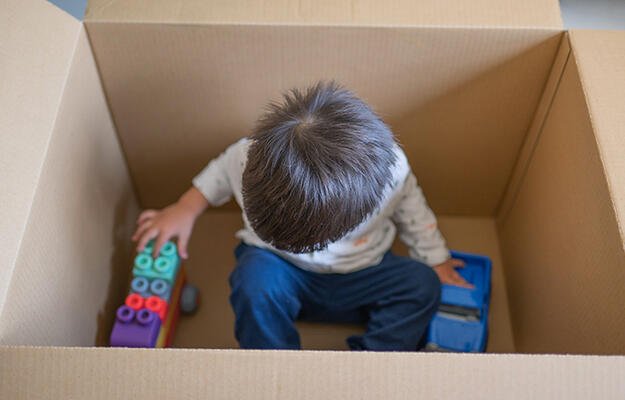
How Housing Affects Children’s Outcomes
by Veronica Gaitán
Housing quality, instability, and unaffordability threaten the well-being of millions of children across the nation. Research shows that housing is the first rung on the ladder to economic opportunity and that a person’s access to opportunity is intrinsically linked with that of the community where they live. As home prices increase, the gap between rents and incomes continues to widen, and nearly half of today’s renters are cost burdened. Child welfare professionals, educators, and pediatricians can strengthen their work by understanding the central importance of housing as a determinant of wide-ranging outcomes for the country’s youngest generation.
The following research shows how housing creates better educational opportunities for children, how healthy homes and communities make for healthier children, and how housing builds stronger economic foundations for their futures.
How housing affects children’s health outcomes
- Poor housing quality is associated with higher baseline symptoms of depression, anxiety, and aggression from elementary school through young adulthood.
- Children who live in US Department of Housing and Urban Development–assisted households have half the prevalence of elevated blood lead levels than children in nonassisted low-income families, after adjustment for demographic, socioeconomic, and family characteristics. These data suggest that low-income families could see improved health benefits for their children either increased access to subsidized housing or increased lead remediation and regulations on existing unassisted housing.
- A study that tracked children in rural areas beginning at age 9 found after 15 years that poor housing conditions, including physical quality, home hazards, crowding, and clutter, were associated with worse psychological health immediately and over time.
- A study of single-parent families living in violent Philadelphia neighborhoods found that children described their neighborhood environment as an important source of daily stress. This was attributed to exposure to conflict in their neighborhoods and schools and witnessing crime and police activity near their homes.
- Being behind on rent, a history of multiple moves, and a history of homelessness are associated with adverse health outcomes for low-income renter caregivers and their children.
- A study of 75 homeless families receiving child welfare services found that child and family safety were perceived as less important than availability and affordability when caregivers were making housing decisions. This points to a need for housing-informed child welfare services to ensure homeless families’ long-term safety.
- While young children who experience prenatal or postnatal homelessness alone had increased negative health outcomes, those who experience both pre- and postnatal homelessness had even more serious health consequences.
- Renter households with children are more likely to have asthma triggers in their homes than owners and are more likely to have at least one child with asthma.
How housing affects children’s educational outcomes
- Decreased lead exposure is associated with improved third grade test scores.
- Intradistrict school mobility is associated with lower reading achievement scores in the short-term and over time.
- Near a high-scoring public school, housing costs 2.4 times as much, roughly $11,000 more a year, as housing near a low-scoring public school.
- Living in poor-quality housing and disadvantaged neighborhoods is associated with lower kindergarten readiness scores. Further, children living in homes that were in foreclosure, in tax delinquency, or owned by a speculator were more likely to receive worse kindergarten readiness scores than children in stable housing.
- Community revitalization efforts in public housing may improve math and reading scores of elementary school students.
- Participation in after-school programs in low-income neighborhoods can reduce students’ likelihood of suspension and expulsion, improve science and math proficiency, improve school attendance, and improve reading assessment scores.
- In Florida, absenteeism is more common among homeless schoolchildren. They also receive lower passing rates for English language arts, math, and science exams than their housed counterparts.
- Children living in a crowded household before age 19 are less likely to graduate from high school and tend to have lower educational attainment at age 25.
Children’s housing stability can shape their future economic well-being. Evidence shows that psychological problems experienced during childhood reduce adult earnings and that young low-income children benefit from being raised in a neighborhood where workers exhibit high occupational prestige. In addition, younger siblings who spent more years living in subsidized housing had higher annual earnings by their midtwenties compared with their older siblings who spent fewer years with housing assistance.
Housing has a profound impact on all children’s lives. Professionals who work with families and children should explore ways to incorporate housing-informed policies and partnerships into their services.
Photo by Natalin*ka/Shutterstock


